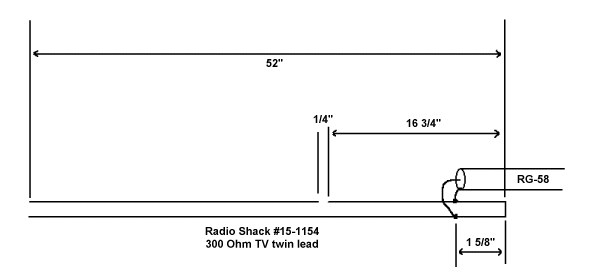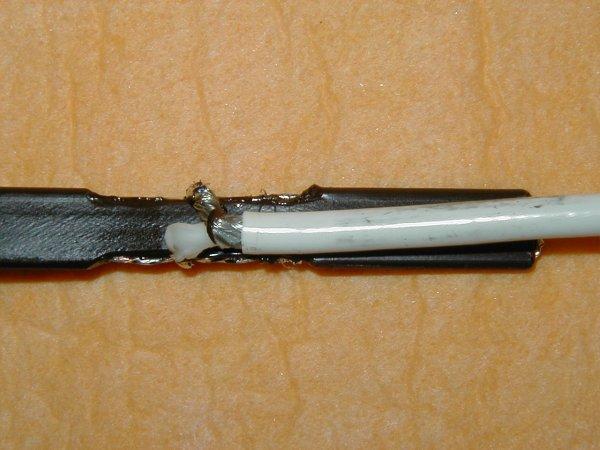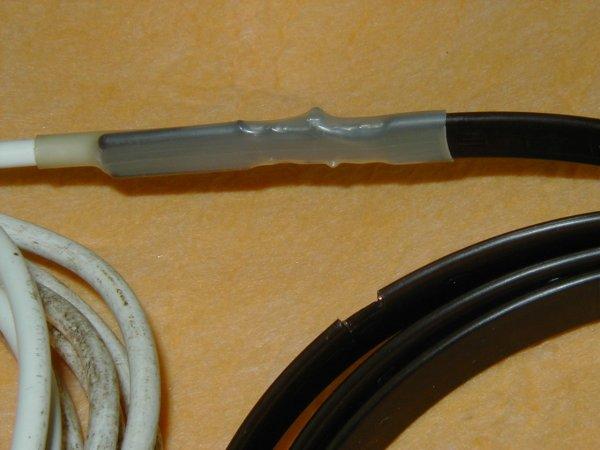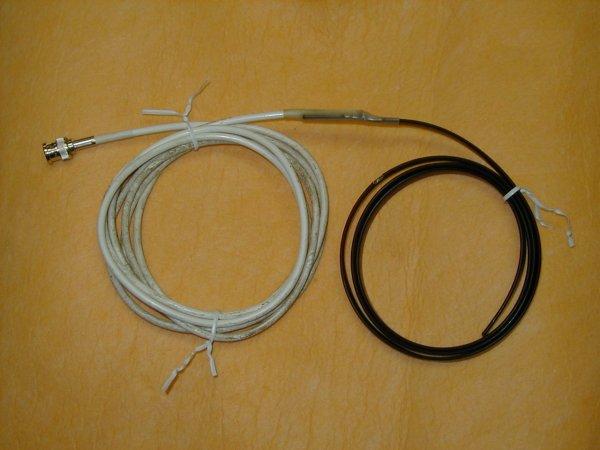I don't like antennas that are difficult to duplicate (see my dipole, it's easy). The J-pole has so many variations on the web that I'm not going to link to any of them. Even the twinlead dipole from ARRL has been questioned.
So you wonder why I bother with this. It's because of the easy portability of the twinlead version of the J-pole and it's recommended use by some ARES groups.
Henry - KM4O (sk) and I spent a couple of hours looking over the different antennas on the web and seeing so many variations decided that we were just going to have to build one that the group could duplicate. Now I'm not selling this as a good antenna, or an antenna for you to duplicate. Rather it is just the product of our efforts to make one work for the ARES Ready Bag.
Below are the dimensions we came up with using the Radio Shack twinlead. We experimented with the length of the antenna as well as the position of the feedline connection point. We achieved a SWR of 1.7:1 at the operating frequency of 146.625 MHz and didn't see a wide variation from that plus or minus 1 MHz. The antenna seemed to perform okay so it wasn't just a matched dummy load.
Have fun if you choose to make one of these. If you come up with one that REALLY works, please make one for me!
73,
Tony - W4ZT (ex WA4UPE) and Henry - KM4O
Gary O'Neil, N3GO, sent me an email with a wealth of info on the J-pole antenna design. He may have the answer on a usable j-pole. You can find his info at http://snow.prohosting.com/~w0rcy/Jpole/jpole.html



